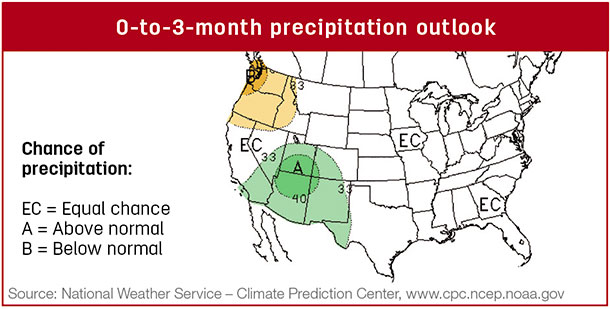Although nitrates can accumulate in a variety of forages and weeds, the species most likely to accumulate high levels include corn, sorghum, sudangrass, sorghum-sudangrass hybrids, johnsongrass, pigweed and cereal grains (e.g., oats, wheat, rye, etc.). It is important to distinguish it is the vegetative portions of these plants, and not the grain or seedheads, that are a concern.
Native grasses, timothy, bromegrass, bermudagrass, bahiagrass and old-world bluestems are not considered to be important accumulators of nitrates.
Nitrates accumulate when plants are pulling nitrates out of the soil but are not growing enough to convert these nitrates to amino acids and protein molecules. Nitrates generally accumulate in the lower portions of the stem.

So when cutting hay or silage, one strategy to reduce nitrate levels is to raise the height of the hay cutter or silage chopper, leaving the bottom 3 to 12 inches of the stems in the field. Making silage can reduce nitrate levels 40 to 60 percent during the curing process; silages should be tested after the curing process has finished.
Nitrate content is generally reported as nitrate or nitrate-nitrogen; to convert nitrate-nitrogen to nitrate, multiply by 4.43. Most labs and university extension fact sheets provide feeding recommendations depending on nitrate content.
For example, the recommendations may say samples below 3,000 parts per million nitrate are safe to feed to all cattle, while samples above 10,000 parts per million nitrate should not be fed. Samples in between these values can be fed at 25 percent, 50 percent or some other percentage of the total diet.
Levels considered safe to feed to all cattle (pregnant cows, lactating cows, calves, etc.) differ across states and labs. These differences are due to limited research on nitrate toxicity.
Variations in diet composition, rumen microbial populations, rate of intake and local environments can affect how cattle respond to different levels of nitrates. Research from the Netherlands indicates nitrate-rich hay is more toxic than nitrate-rich grass. Additionally, cattle can adapt to higher levels of nitrates over time.
Strategies to deal with high-nitrate forages include feeding corn or similar energy sources, mixing high-nitrate forages with low-nitrate forages or inoculating the rumen with certain strains of bacteria. When dealing with nitrate-rich forages, visit with a nutritionist or veterinarian about strategies for your situation. ![]()

-
Jason Banta
- Associate Professor and Extension Beef Cattle Specialist
- Texas A&M University
- Email Jason Banta








